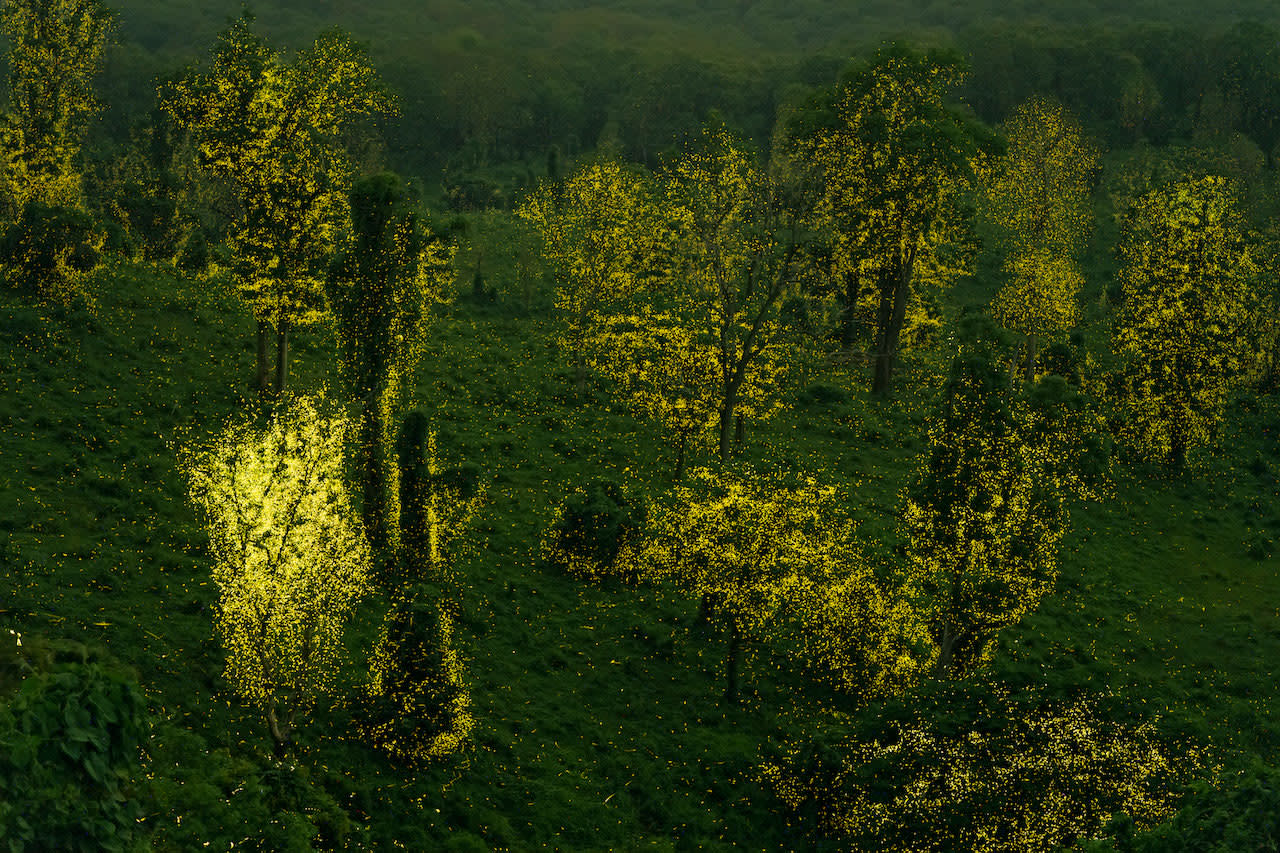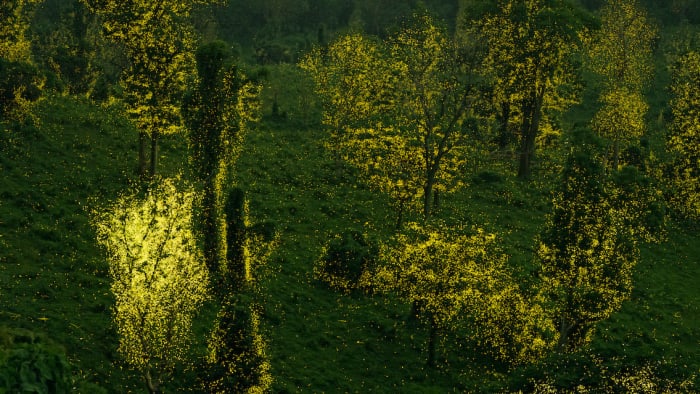 Listen to this article
•
15:34 min
Listen to this article
•
15:34 min
The dense forests deep in Anamalai Tiger Reserve’s protected area are a biodiversity treasure trove. They are home to a spectacular array of wild species and host a wide variety of ecosystems. These environs and landscapes are truly meditative and awe-inspiring by day. But, after dark, for a few special days each year, these ancient jungles transform into a gorgeous, glowing wonderland.
Like Christmas fairy lights gently floating midair, giant swarms of millions and millions of fireflies emit a trance-inducing, yellowish-green light. They decorate the dark forest and stage a mesmerising, jaw-dropping spectacle.
At the behest of the forest department of Anamalai Tiger Reserve, this phenomenon was creatively documented by our team of photographers, accompanied by frontline staff of the tiger reserve. During those few summer days in May, the team was treated to a stunning light show where the entire deciduous forestscape lit up at once, plunged into darkness, and then lit up all over again in near-perfect synchrony.
A stunning sight to behold, with the bugs flashing with a distinct rhythm: a few quick bursts of light followed by a several-second pause, then more bursts. In-person, the display looked like wave after wave of sparkling greenish-yellow flashes, undulating through the dark forest in an incredible choreographed production.
Returning from the field, we pondered, “How do millions and millions of these fireflies spread over thousands of hectares of protected forest coordinate with each other?” Research from other parts of the world suggests that the synchronous fireflies slightly adjust the timing of their light cycles based on nearby flashes exhibited by fellow fireflies.
Through various studies conducted across Mexico, the Great Smoky Mountains National Park in Tennessee, and Thailand, scientists have discovered that the insects copy their nearest neighbours using visual cues. This allows them to create the wave effect rather than flash according to some innate rhythm.
Cover photo: Dhanu Paran

Unfortunately, three days into this incredible phenomenon in 2022, the Anamalais and Pollachi plains experienced a heavy downpour accompanied by thunder and lightning due to cyclonic precipitation from the Bay of Bengal. In the following days, even after the rain stopped, firefly activity that had been disrupted by heavy winds and lightning did not return to the earlier intensity of flashing. In our first year of focused observation, we witnessed a natural imbalance that we felt could perhaps be attributed to climate change.
In 2023, the summer showers (which typically arrive by April) were delayed by at least a month. Fireflies start coming out of the leaf litter from their larval stage when there is a break in the rain. However, in 2023, heavy rains intermittently carried on until May, and then the monsoon broke. This pattern of either heavy, prolonged rain or no rain at all is detrimental to the congregation and mating behaviour of fireflies.
For the fireflies, synchronisation occurs during their mating season. It’s been observed that these fireflies typically don’t flash when it rains, and on misty, drippy evenings, the intensity of their display diminishes and is restricted beneath the forest canopy. Cool temperatures also shut down the display for the night. Photo: Pravin Shanmughanandam
Apart from climate change, increasing pressure on the landscape and changes in land use, for example, for tourism (vehicles plying, etc.) or developmental projects (roads and waterholes), can pose a threat to these critical populations and may wipe out such congregations if not strictly regulated. Walking and driving through these protected forests can kill females and compact the soil, where the fireflies live as larvae for many months, feeding on soft-bodied animals like worms and snails before taking wing as adults.
Mr Ganesan, deputy director, Advanced Institute for Wildlife Conservation (AIWC), Vandalur, observed, “We can lose mass populations and never even realise it when we alter the landscape, be it for official or tourism purposes." The entire next generation of fireflies lie hidden beneath the forest floor and will never make it to adulthood if their habitat is altered — and we will only notice their absence the next year and regret it, he added. Photos: Pravin Shanmughanandam (1), Dhanu Paran (2)



















